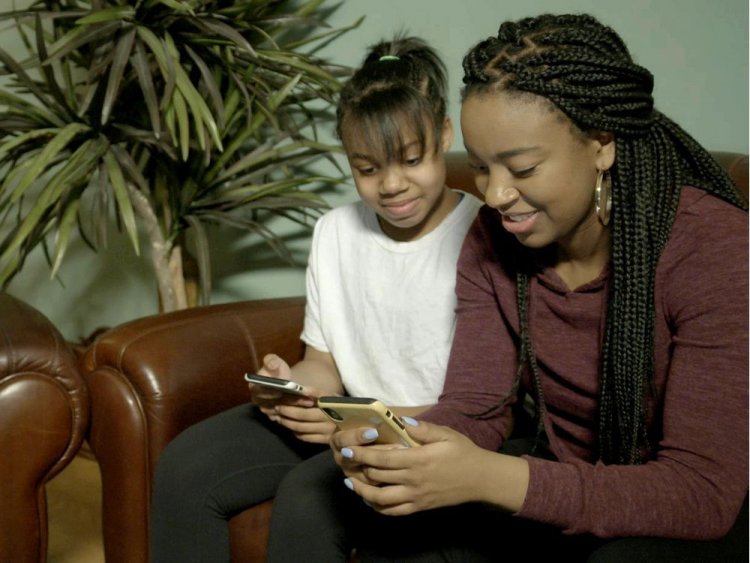Help your kids manage their tv time during this coronavirus era
Now, more than ever, we need to be mindful of our screens and how we use them. We should always be their masters—and never let them be masters over us.

COVID-19, popularly known as the coronavirus, has sickened hundreds of thousands of people worldwide, and those numbers grow every day. But even if you’re lucky enough to never catch the virus, you’ve been impacted by it. We all have been.
Most Americans have been on virtual lockdown since the beginning of March. Sports have been suspended. Businesses have closed. Restaurants have shut their doors. Even many national parks and hiking trailheads have stopped welcoming visitors, and many state governments are encouraging people to only leave their homes if they have to.
But the coronavirus hasn’t taken our screens. And while those screens provide a window into a broader world and a tantalizing promise of, at least, a temporary escape from today’s scary headlines, they come with their own problems—and, perhaps their own sort of sicknesses. We can grow distracted and dependent on those screens, and the coronavirus increases both that dependence and our need for that distraction.
Now, more than ever, we need to be mindful of our screens and how we use them. We should always be their masters—and never let them be masters over us.
Why to be Wary of Too Much Screen Time
Televisions, laptops, tablets, smartphones and other forms of technology are wonderful tools we can use to connect with others (at a time when connecting with others is more difficult, and more important, than ever), become more informed, save time and entertain ourselves. However, when they become impediments to our physical, social, and emotional health, those tools become tyrants. They may contribute to a lot of wasted time and, in the case of our children, interfere with normal emotional and relational development.
Therefore, some thoughtful consideration is needed regarding how our children may use technology to their advantage and avoid the negative aspects of spending too much time tethered to devices—even now, when the temptation is especially great.
Specifically, paying attention to the relative safety, age appropriateness, and potential health risks of interaction with technology can help parents set some healthy limits for its use.
“Paying attention? When do I have time to pay attention?” you ask. We’ve got our own screens to view, whether we’re using them to create another spreadsheet or (ahem) take a mental health break by checking Instagram or playing Words With Friends. You get the picture. Setting healthy limits starts with us, because our children learn from observing us and are ever ready to pounce at the slightest hint of hypocrisy.
So what limits need to be set? Well, it might be helpful to remember the acronym TO BE SAFE.
Time
The best place to start is to set limits on the amount of time children spend with technology. Your kids will be most likely to stick to the limits you set if you stick to them too. Adults can just as easily find themselves sucked into the online world when the five minutes that was planned for checking emails after work turn into several hours of messages back and forth between friends.
Experts who study the effects of technology on children, youth, and young adults generally recommend no more than two hours of non-academic screen time per day. There’s no asterisk there that says “unless you’re quarantined at home.” This can be tricky, too, because as some kids continue or even finish out the school year online, kids may have all sorts of reasons to be online—and all sorts of ways to sneak in some “non-academic screen time” under the guise of classwork. This means you need to:
Observe
You can’t expect to know how your children are using their “techno time” unless you are observing how and when they’re engaged. While there are many ways to monitor usage, the most effective way tends to be via programs that encourage parents to talk with their kids about safety concerns, be open about the fact that they’ll be monitoring usage and plan times to check in with one another about how things are going. Based on what you observe, you might want to establish some:
Boundaries
Children need and want good boundaries in their lives in order to thrive and grow.
I know, they protest at just about every attempt you make to set a limit. That’s normal. It’s your child’s way of testing you to see just how much you care and what you’re willing to do to protect her. So chat with your child about your concerns and tie some reasonable limits to those concerns. Put some boundaries around:
- where devices may be used.
- when devices should be on and off.
- which social media platforms and web environments may be used.
For example, to prevent family members sneaking off to be alone with their computers and smartphones, make it a family rule to locate all computers in a common area in your home such as a family room. Or, to prevent hearing that familiar buzz or distinctive “ping” that signals text messages coming from your son’s bedroom all night long, designate a certain time for phones to be turned off and put all of them in a central location, away from all bedrooms. Learn about the social media platforms and web environments that are most likely to encourage learning and good social engagement and use white lists or black lists to set some parameters.
And while you are enforcing those boundaries, pay close attention to your kids’ reactions to screen time. In other words, notice their:
Emotions
After your children disengage from technology as the day wears on, do you notice that certain emotions such as anger and sadness seem to linger? If so, tell them what you’ve noticed and ask them if they can explain why there seems to be a connection between technology use and their changing emotions.
It is not unusual for boys to be more aggressive after playing games online and engaging in social media, while girls will often show more signs of depression, anxiety, and dissatisfaction with their lives. If these changes in emotion when they’re plugged in compared to when they’re not begin to look like a pattern, you’ll need to limit the time on technology and encourage more direct involvement with family and friends, as well as healthy physical exercise.
Rigorous activities provide a good outlet for intense emotions and encourage good self-care along with:
Sleep
If you haven’t heard, we have a generation of sleep-deprived youth, primarily because of how hard it is for them to walk away from technology. There is a new phenomenon known as “fear of missing out” or FOMO, which basically refers to anxiety about not being in the social media or other online “loop” while one is sleeping.
Add to that the fact that the lights and colors on screens interfere with normal sleep patterns, and the youth of today have a difficult time getting to sleep and staying asleep. This wouldn’t be so bad if it just meant that we noticed a lot of yawning in our kids. But sleep deprivation, especially over time, can contribute to serious health problems and in extreme cases, psychotic episodes.
Sleep is essential to optimum physical, social, and emotional health. So, hold firm to limits on screen time, encourage your children to turn off the screens at least two hours before bedtime and help them get into sleep routines that encourage at least 7 hours of uninterrupted sleep.
Of course all of these suggestions make sense only when considered in the context of a child’s:
Age
In general, the younger a child is, the more limits you need to put on technology use and the hope is that as the child gets older, he or she will begin to internalize those limits and learn self-discipline. If so, growing kids should be rewarded with:
Freedoms Earned
Give some new freedom for respecting the boundaries around technology you’ve put into place to protect your kids and encourage their healthy development. When you reward a son or daughter for being disciplined consumers of technology, this motivates their siblings and friends to comply so they can have some of the same freedoms extended to them.
You can expect some pushback from your children when you attempt to set limits on technology and establish healthy self-care practices for your family. But don’t let that discourage you. You’ll be contributing to their overall health and teaching them some good boundaries they can pass on to their kids someday.
What To Do Instead
One of the best strategies to keep your children’s screen time down might be to give them other alternative activities. We talked about several on a recent episode of the Plugged In Show (Episode 18: The Coronavirus and Home-Bound Entertainment). Suggestions included:
Reading a Book.
This is a great way to bond with your children and encourage a love of reading. Pick something you’ll both enjoy. The Chronicles of Narnia books are wonderful books to read aloud, but stories with lots of fun sounds— Carl Sandburg’s The Rutabaga Stories or Rudyard Kipling’s Just So Stories, for instance—are made for communal reading.
Playing a Game.
Board games have come a long way since Monopoly. They can be a wonderful way to spend time with your children and even learn something about each other.
Taking a Walk.
Be safe, of course. Practice social distancing where appropriate. But by all means, allow some time to get you and your kids out into the fresh air. Spending a little time listening to the birds and the wind, seeing the trees start to bloom, and the grass start to turn green can be a strong stabilizer in these stressful times—and a subtle reminder that God is good and in control.
Written by Adam Holz, Paul Asay, and Joannie Debrito. Originally posted on focusonthefamily.com






































